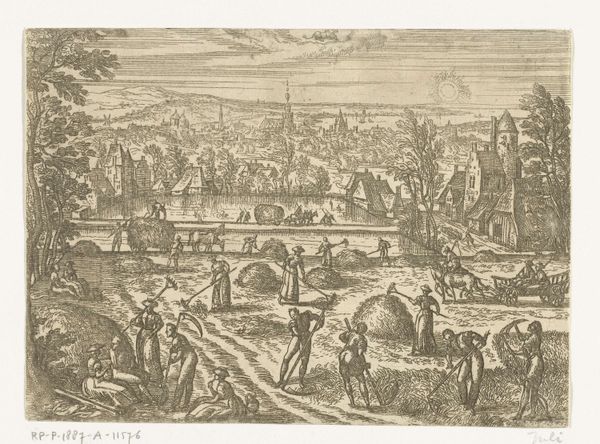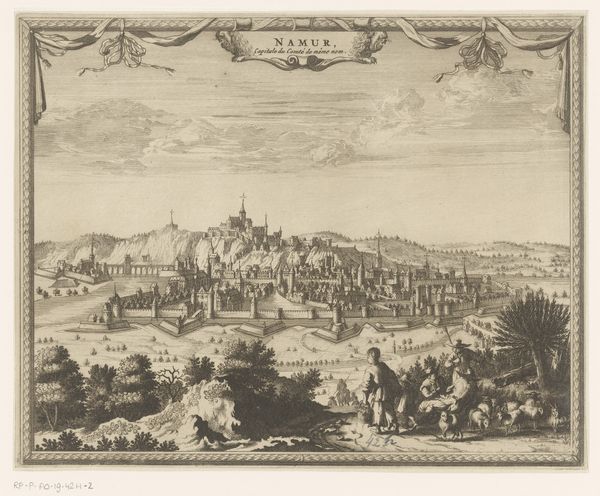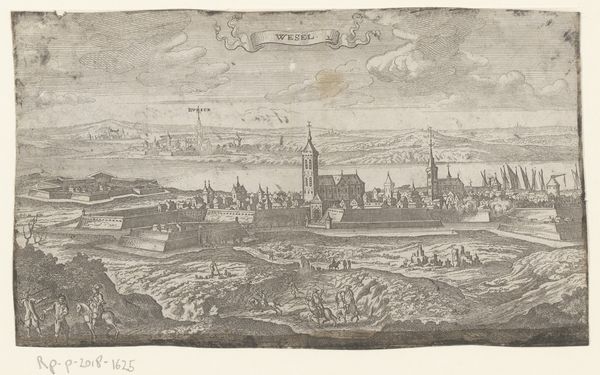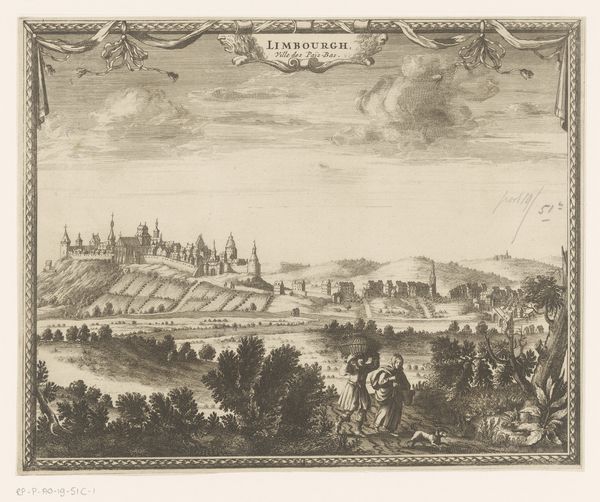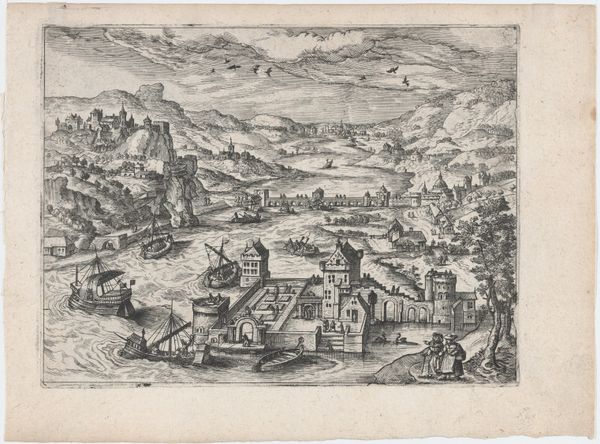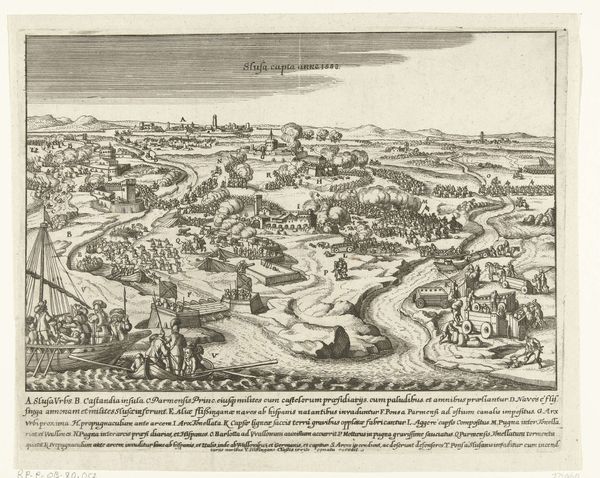
print, etching
# print
#
pen sketch
#
etching
#
pencil sketch
#
old engraving style
#
landscape
#
etching
#
mannerism
#
genre-painting
Dimensions: height 120 mm, width 165 mm
Copyright: Rijks Museum: Open Domain
Editor: Pieter van der Borcht’s “Augustus,” dating somewhere between 1545 and 1608, captures a landscape scene in etching, reminiscent of a pen sketch. There’s a real energy to it, a bustling feeling from all the figures hard at work. What draws your eye in this piece? Curator: You know, it feels a little like stepping into a dream, doesn't it? All these tiny people toiling away beneath this storybook castle with a sun that seems to smile down at them. For me, the genius here is how van der Borcht crams so much detail into a small space, doesn’t he? The endless horizon meets intimate moments of labor – lovers arguing in a wheat field, while, just beyond, tiny figures pull boats up the water like ants. It’s a playful commentary on scale and perspective, a hint perhaps at the smallness of our big human dramas. Does it strike you as ordered or chaotic? Editor: That's a great question. It definitely feels both ordered *and* chaotic. There’s this strong diagonal leading your eye into the distance, but then you get lost in all those little narrative pockets. I almost missed those people arguing! What do you think van der Borcht was trying to say about the month of August through this scene? Curator: Oh, it's fertile, isn't it? Not just the land bursting forth, but the imagination too! August, the height of summer, and everyone working in a perfect pre-industrial, earthly paradise... but look closer at these tiny humans: there is something of a sardonic wink here, as the land dominates the people - what is supposed to be their plenty, their control, actually shows them working incredibly hard. Are *they* controlling the landscape, or is it the other way around? Editor: That gives me a lot to think about! Seeing the tension makes the piece even more alive, paradoxically! Thanks for your thoughts! Curator: My pleasure! Remember, art speaks when you listen, and even more when you look closely at it with an open mind.
Comments
No comments
Be the first to comment and join the conversation on the ultimate creative platform.

